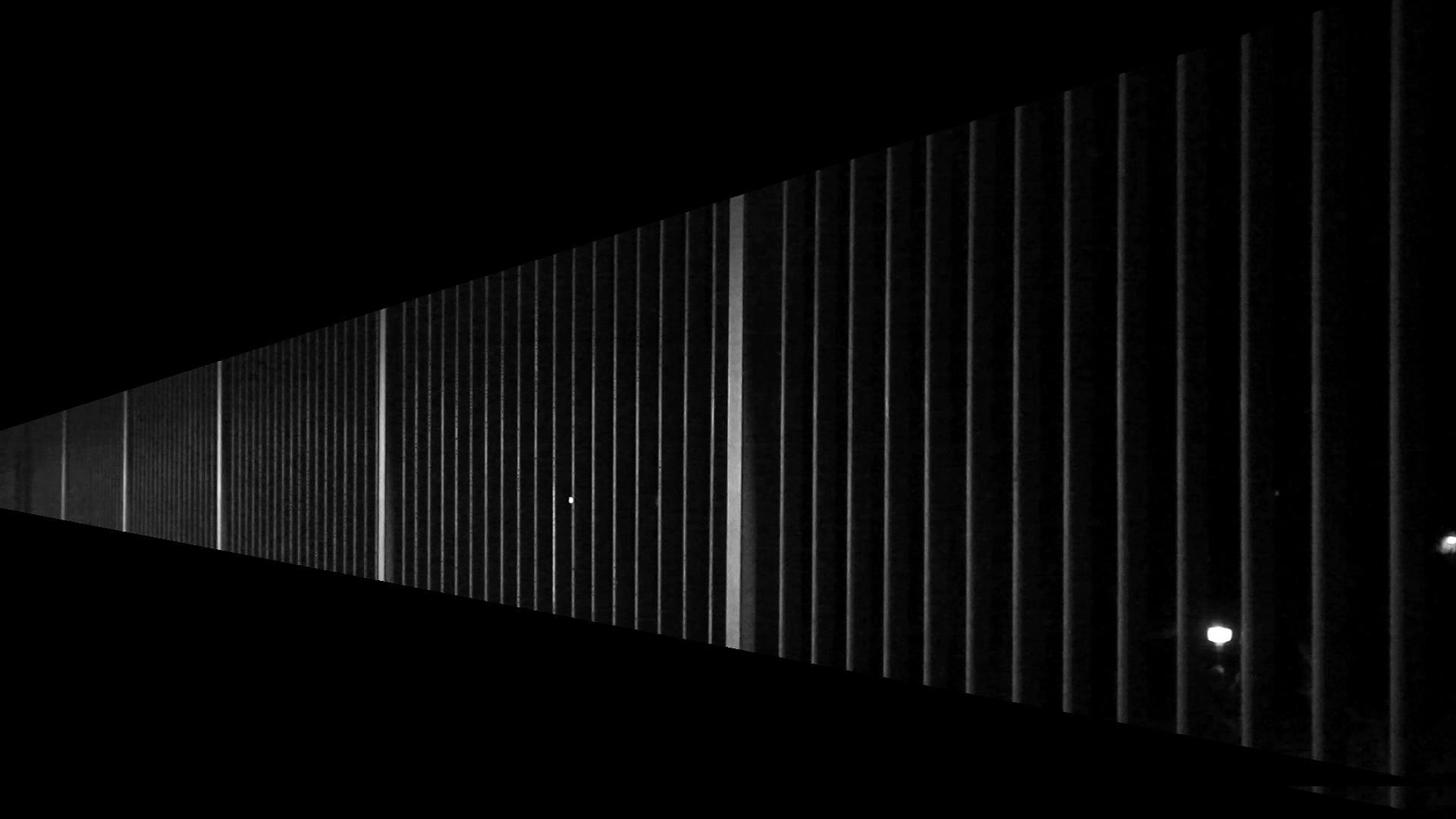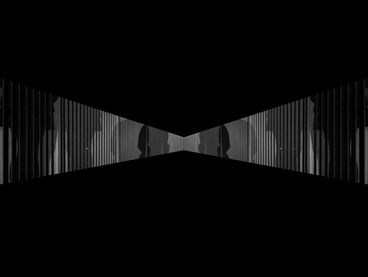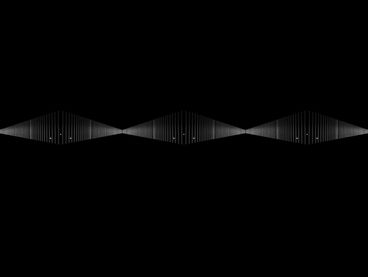MOOZ – audiovisual arts collection
shadow on railing
2018, 5:36 min., 16:9, b/w
Idea and realization: Jeayoung Koh
Sound: Leon Maximilian Brückner
Advisors: Prof. Matthias Müller, Daniel Burkhardt
Production: Academy of Media Arts, Cologne
Lamplight flickers on the dismal railing of an inhospitable bridge in a nocturnal nowhere—the video shadow on railing begins with a motif that is off to the side at the edge of the street and is thus destined to be overlooked.
It is a recurring stylistic element in Jeayoung Koh’s videos to work with motifs that are so unspectacular and routine that they are hardly suitable for cinematic representation.
In Landschaft vor dem Zugfenster (2016) and Nachtbus im Regen (2017) are recordings that Koh filmed through the windows of public transit which he repeatedly layered and compressed in elaborate digital post-processing, lending them a hypnotic gravitational pull that draws the viewer out of the everyday world and into a almost nonfigurative, trance-like counter-world.
In contrast to previous works, the recordings that form the foundation of the current work were captured by a stationary camera. Resting on a tripod, the camera focuses on a bridge railing, with the headlights of passing cars sliding across it. The moving beams of light cast shadows of objects and people on the structure of the railing, while bodies and objects themselves remain unseen outside of the frame.
Made up of individual bars, the railing is open and thus possible to see through. In the darkness beyond appears a landscape that remains vague except for a couple points of light. The bars of the railing function as a porous projection screen on which the light and shadow play is portrayed.
After a few seconds the already visually reduced picture narrows. Two black masks wipe into the frame from the edges, masking out the areas above and below the railing. As the railing tapers perspectivally towards the back the masking itself takes on the shape of a beam of light.
While the spotlights from car headlights glide across the bars of the bridge railing, the view pans to the left, doubling the structure in a mirror image hinged at the left edge. It gives the impression of a tunnel narrowing into the distance. On the imaginary walls of the newly created space the silhouettes of human bodies emerge for the first time. The camera on its tripod also becomes a shadow image and slides into view.
The view widens again and a vertical mirroring of the motif is repeated. Like a thought that flips and turns over and over in one’s mind, gradually opening up into a conceptual terrain, the picture folds out further, extending above and below until eventually an ornamental structure becomes apparent. One in which the figurative starting point still exists but is only vaguely discernable. In the context of its duplication the original motif generates a completely new perceptual impression.
At the same time, in the framework of this structure, the video reflects our fundamental cognitive processes, since the consciousness is itself a collage, as the painter and writer Henri Michaux put it. In strictly controlled experiments that he conducted with the consciousness-expanding drug mescaline, he attempted to get to the bottom of our mental structures and discovered in the process that behind every structure further structures are hidden and that even the seemingly smallest conceptual element is divisible and contains an entire further cosmos. The central motif of his drawings is the rift, which connects the different surfaces and layers nested in each other.
In Jeayoung Koh’s work, however, it is the temporal discontinuity that again breaks down the at first homogenous ornamental structure and that allows it to be visible in its small divergent cells, in which light and shadow in an alternating rhythm slide against each other. Out of the previously homogenous pulsing surface emerge autonomous visual units, which lend the entire structure a depth that invites one to mentally zoom in.
The individual picture is embedded in a large potentially unending web of images and connections in a spatial, temporal as well as thematic dimension. For Michaux it is a feeling of infinity and thus also of fathomlessness that thereby results, which further splits and clarifies each perception, dismantling it into individual parts. In following this line of thought it is impossible to ever arrive at a reliable, indivisible, definitive unit. As in the initial shots by Koh, in which we only perceive the silhouettes of objects on a porous surface, any perception lies in an in-between place, hangs in limbo, and is only to be located in its particular context.
At the end of the work Koh folds together the previously spread-open cosmos like a map. We return from a far-off perspective to the prosaic starting point and also see a human form for the first time. A jogger crosses the pictorial field and reminds us that life in this world continues.
Text — Daniel Burkhardt
Shadow on railing celebrated its 2018 premiere at the Short Film Festival Cologne and was presented at the 65th Short Film Festival Oberhausen as part of the NRW Competition.
Jeayoung Koh was born in 1986 in Masan, South Korea. From 2005 to 2012 he studied painting at Kangnam University in South Korea. In 2014 he began studying at Burg Giebichenstein Kunsthochschule Halle in the department of time-based art, and subsequently began postgraduate studies at the Academy of Media Arts Cologne in 2016. With his works he explores the intersection between documentary reality and cinematic fiction.










